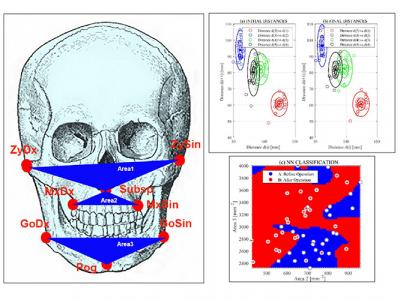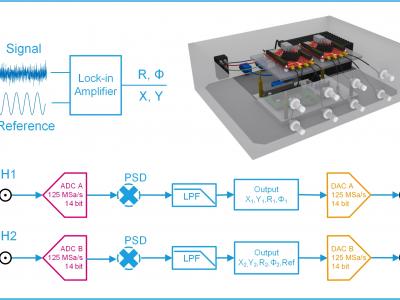Digital signal processing
Anthropometric studies focusing on facial metrics and their proportions form an important research area devoted to observations of the appearance of the human skull. Many different applications include the use of craniometry for maxillofacial reconstruction and surgery. The paper and the associated dataset explores the possibility of using selected craniometric points and associated metric to observe spatial changes during the maxillofacial surgery treatment. The experimental dataset includes observations of 27 individuals.
- Categories:
 232 Views
232 Views5G-NR is beginning to be widely deployed in the mmWave frequencies in urban areas in the US and around the world. Due to the directional nature of mmWave signal propagation, improving performance of such deployments heavily relies on beam management and deployment configurations.
- Categories:
 805 Views
805 Views
The respiratory includes selected files related to a study of physiological changes recorded by wearable devices during physical exercise on a home exercise bike. It is focused on testing the effect of face masks and respirators on blood oxygen concentration, breathing frequency, and the heart rate changes.
- Categories:
 344 Views
344 ViewsThis dataset contains Wi-Fi sensing data using Channel State Information (CSI) for respiration rate measurements in a standard 3m x 3m room. The Wi-Fi CSI data was collected using the Wi-Fi module on the ESP32 Microcontroller units using the esp32-csi-tool. The Wi-Fi CSI data is accompanied by respiration belt data taken with the Wi-Fi measurements simultaneously using the Neulog NUL-236 respiration belt logger as ground truth.
- Categories:
 221 Views
221 Views
In this study, a primary IMU-based gait dataset has been collected from 30 participants using a MOTI goniometer. This device collects movement data related to specific joints depending on the location of the device. The MOTI sensor contains an IMU consisting of an accelerometer, gyroscope, and magnetometer. Accelerometers measure acceleration the acceleration of the device, gyroscopes measure angular velocity of the device, and magnetometers measure the magnetic field of the Earth. In our study, the device was attached to arm and leg (thigh) positions.
- Categories:
 685 Views
685 Views
This is a test - please ignore
- Categories:
 3 Views
3 ViewsThis is the data for the paper we prepared titled ''High-performance digital lock-in amplifier module based on open-source FPGA: Implementation and applications''. In this work, a high-performance digital lock-in amplifier module based on an open-source FPGA is constructed. The module is calibrated based on the obtained correction curves of the demodulation results such as amplitude and phase. As demonstrations, the phase difference and thermal noise measurement are carried out by using the module.
- Categories:
 415 Views
415 Views
nobody
- Categories:
 100 Views
100 Views
Pipaset preveiw is linked with pipaset and TEAS Multimodal dataset and annotation system automatic music transcription and expressionness analysis dedicated to Chinese music instrument pipa. This dataset
- Categories:
 107 Views
107 ViewsThe dataset consists of three parts, the first part consists of single notes and playing technique samples, and the second includes the triple viewed video, steoro-microphone recordings and 4 track optical vibration recordings in raw file for famous Chinese Folk music ‘Jasmine Flower’ and the first section of ‘Ambush from ten sides’. The third part concerns about the source separated tracks from optical recordings and expressive annotation files are included in the annotation files.
- Categories:
 100 Views
100 Views


